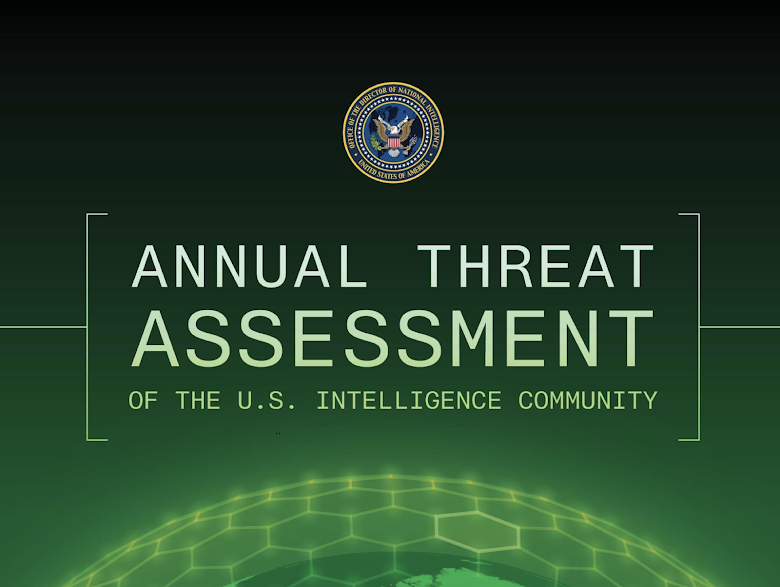Iran continues to pose a significant threat to US interests and regional stability through its military capabilities, support for proxy groups, and expanding nuclear program. Still, according to the latest annual assessment from the US Intelligence Community (IC), it faces serious internal and external challenges testing its ambitions.
The analysis comes from the 2025 Annual Threat Assessment (ATA), released in March 2025 by the Office of the Director of National Intelligence (ODNI). The report, which represents the collective insights of the US intelligence agencies and uses information available as of March 18, details the most pressing global threats to US national security over the next year. Alongside challenges from prominent state actors like China and Russia and non-state threats like terrorist groups and drug cartels, the report dedicates significant attention to Iran's multifaceted activities.
The assessment states that Tehran will try to leverage its robust missile capabilities and advanced nuclear program, alongside diplomatic outreach, to bolster its regional influence and ensure regime survival. However, the IC notes that regional dynamics, particularly tensions with Israel and domestic pressures, are seriously testing Iran's ambitions.
A key element of Iran's strategy remains its support for a network of militant actors known as the "Axis of Resistance." The report highlights that while the fall of the Asad regime in Syria – a key Iranian ally – represents a "blow" to this network, these groups, including HAMAS, Lebanese Hizballah, Iraqi Shia militias, and Yemen's Huthis, still pose a wide range of threats. The assessment notes the Huthis have emerged as the "most aggressive actor" during the Gaza conflict, attacking shipping and regional targets and expanding their reach through partnerships.
Despite recent setbacks, including Israeli strikes degrading proxy capabilities and Iranian air defenses during the Gaza conflict and its aftermath, the IC assesses Iran's military still poses a threat. Tehran possesses the region's largest stockpile of ballistic missiles and UAVs and continues efforts to improve their lethality and precision. However, the report points out the "limited damage" from Iran's direct strikes on Israel in April and October 2024 highlights shortcomings in its conventional military options.
On the nuclear front, the intelligence community continues to assess that Iran "is not building a nuclear weapon" and that Supreme Leader Khamenei has not reauthorized the weapons program suspended in 2003. Nevertheless, the report expresses concern, noting "pressure has probably built on him to do so" and that a "decades-long taboo on discussing nuclear weapons in public" has eroded within Iran, emboldening advocates. Khamenei remains the ultimate decision-maker. The assessment adds that Iran "very likely aims to continue R&D of chemical and biological agents for offensive purposes."
Cyber operations and malign influence campaigns are also identified as significant threats. The report states that Iran's expertise and willingness to conduct aggressive cyber attacks are growing, often amplified by influence operations. It specifically mentions a June 2024 incident in which an actor linked to Iran's Islamic Revolutionary Guard Corps (IRGC) compromised an email account tied to former President Trump's campaign to conduct spear-phishing and manipulate US journalists.
Internally, the report suggests Iran is at one of its "most fragile points since the Iran-Iraq war," facing growing political, social, and economic pressures, including low growth, high inflation, and societal grievances that could fuel further unrest similar to the protests of late 2022 and early 2023.
The assessment concludes that these challenges, combined with regional pressures and the failure to deter Israel, are forcing Iranian leaders to confront "fundamental questions" about their approach.
